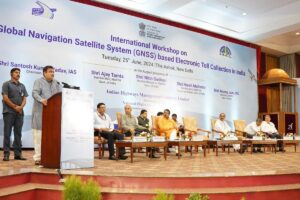Unveiling The Mystery: Navigating Headaches And Brain Tumour Awareness

Unveiling The Mystery: Navigating Headaches And Brain Tumour Awareness
Understanding the intricate interplay between headaches and neurological health is paramount in unravelling this mystery.
14 June 2024
By Payoshi Bisht
In the realm of health, headaches are often brushed off as mere inconveniences, attributed to stress, fatigue or the occasional bug. Yet, amidst the sea of benign discomfort lies a potential harbinger of something more sinister – brain tumours.
Enter Dr. Aditya Gupta, the beacon of knowledge in neurosurgery and cyberknife technology at Artemis Hospital Gurugram. With precision and clarity, Dr. Gupta delineates the nuances of brain tumours, categorising them into primary and secondary types. Their location, size and growth rate, he emphasises, dictate the kaleidoscope of symptoms – from seizures to cognitive decline, blurred vision to limb weakness.
But when do headaches signal a deeper concern? Dr. Gupta’s voice rings with urgency: “Severe, persistent headaches should not be dismissed, especially if accompanied by nausea, vomiting or sensory changes.” His advice is crystal clear: seek medical help promptly if headaches defy your usual pattern or fail to relent with over-the-counter remedies.
In the labyrinth of warning signs, certain cues demand attention. “New onset of severe headaches, worsening over time, or morning headaches warrant scrutiny,” Dr. Gupta asserts. These red flags, he cautions, may hint at underlying issues necessitating prompt evaluation.
For those embarking on the journey of headache diagnosis, early detection is the holy grail. “Treatment outcomes hinge on timely identification,” Dr. Gupta underscores. Persistent headaches merit further exploration, paving the path for diagnostic procedures like CT scans or MRIs to unveil the truth.
Amidst the narrative of headaches and tumours lies a call to action – a plea for vigilance and awareness. Dr. Gupta’s words echo with resonance: “More research, more awareness.” With each headache, each fleeting discomfort, lies the potential for revelation, for intervention.









